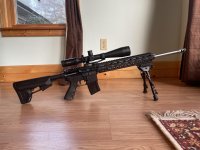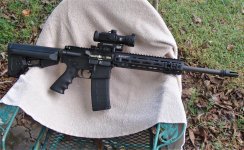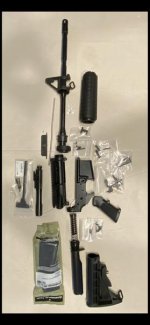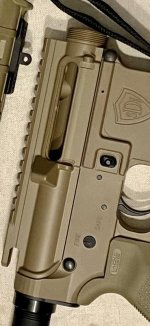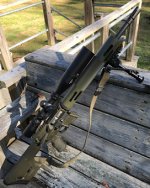Hair Trigger
US Veteran
I want an AR for hunting that is reasonably accurate and powerful out to 400 yards. I narrowed the choices down to either an Anderson AM15 6.5 Grendel at $565.00 or a Rock River Arms 6.8 spc for $802.00. I dislike mil-spec furniture and would replace it with MagPul, add a sling, spare magazine and a Larue trigger; so another $250.00 into either one. For $800.00 to $-1,000.00 I should be able to assemble an entire AR with above average parts. I just don’t know which parts to buy. I am leaning toward a Wilson Combat 6.8 spc barrel and BCG. I don’t believe I need a $500.00 receiver set. I don’t like or need a rail, or a $150.00 CH, hand guards suit me fine. Lots of choices for receiver tubes and buffers/springs.
If anyone can enlighten me on parts choices I would certainly appreciate it.
If you're going to start ripping stuff of to replace it with something more "you", just buy the parts and build it yourself.
I've built two uppers and use a common lower, and they suit what I want just fine. A Grendel is effective way past 400 yards, as a long range cartridge it's good to at least 1000 yards, and would have ample energy for white tail deer at least to 800 yards. According to my ballistics chart for my loads, 6.5G has about the same energy at 1100 yards as a 40S&W has at the muzzle. If you're not interested in more than 400, the 6.8 should fit the bill nicely. I built a 300 BLK to use for CQB matches and mid-range target shooting, it is accurate as hell out to 300. My Grendel is good to 1125, about when it goes subsonic with a 123 grain match bullet. Not quite the legs of a 6.5 Creedmoor, but it's a smaller overall package and cheaper to load for. TRhe common lower has a Geissele High Speed National Match DMR trigger, about 2 pounds on the 2nd stage pull.
If you stay with milspec parts, you can mix and match brands and not worry about something not fitting. I used Mega (now ZEV) upper and lower receivers. I used a Geissele trigger group and their handguard/rails for both rifles. The Grendel is a 20" Odinworks barrel and bolt, matched for the backspacing. I used a 16" Ranier Match barrel for the Blackout, and Magpul ACS stock. There's a mix of Wilson Combat and Spikes Tactical and Precision Arms parts depending on which upper setup.
Are you including a scope in your stated budget or shooting with iron sights for a while? Spend at least 2/3 the total cost of the rifle on a good scope and mount.
Grendel on the left, Blackout on the right:

